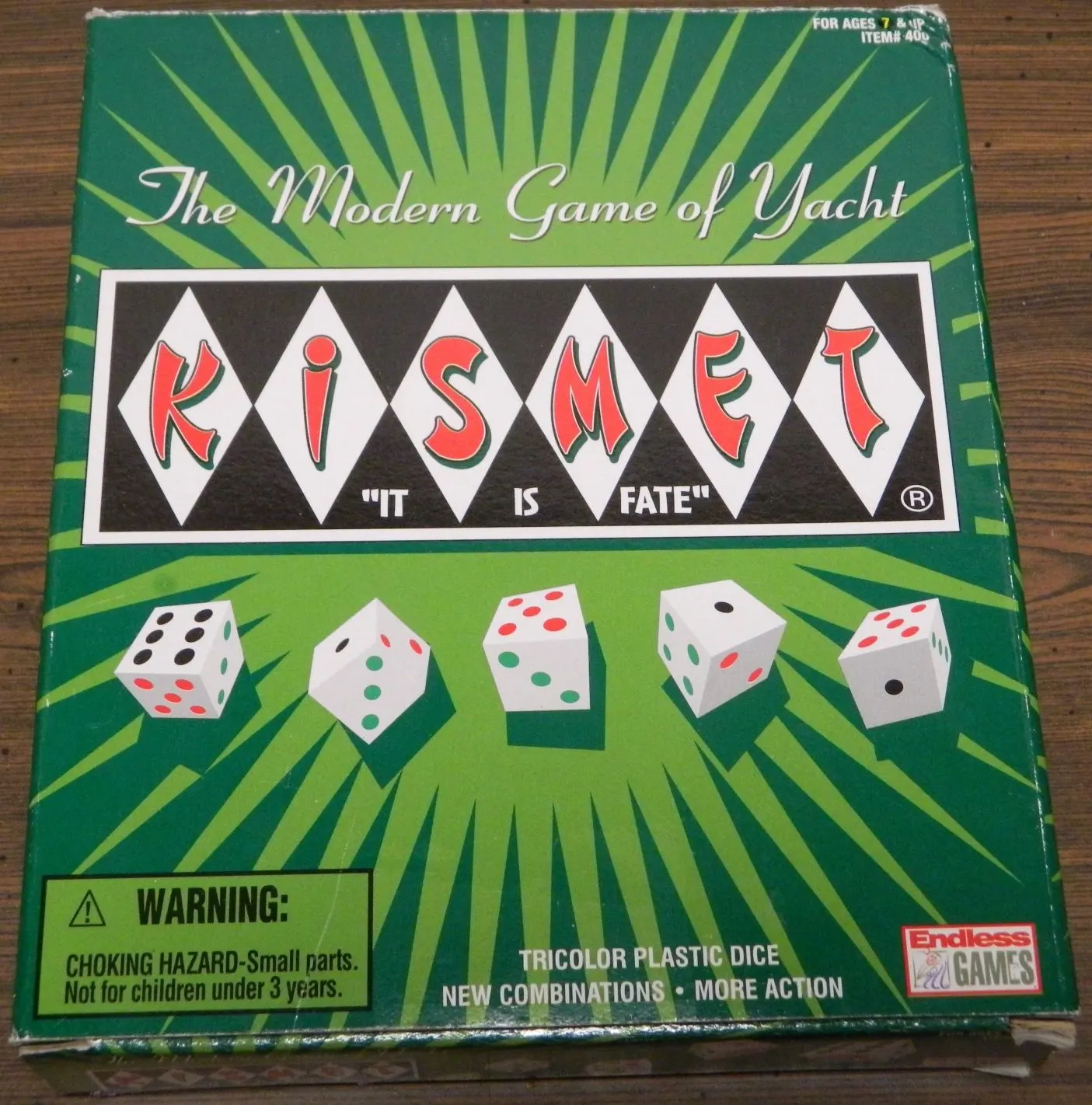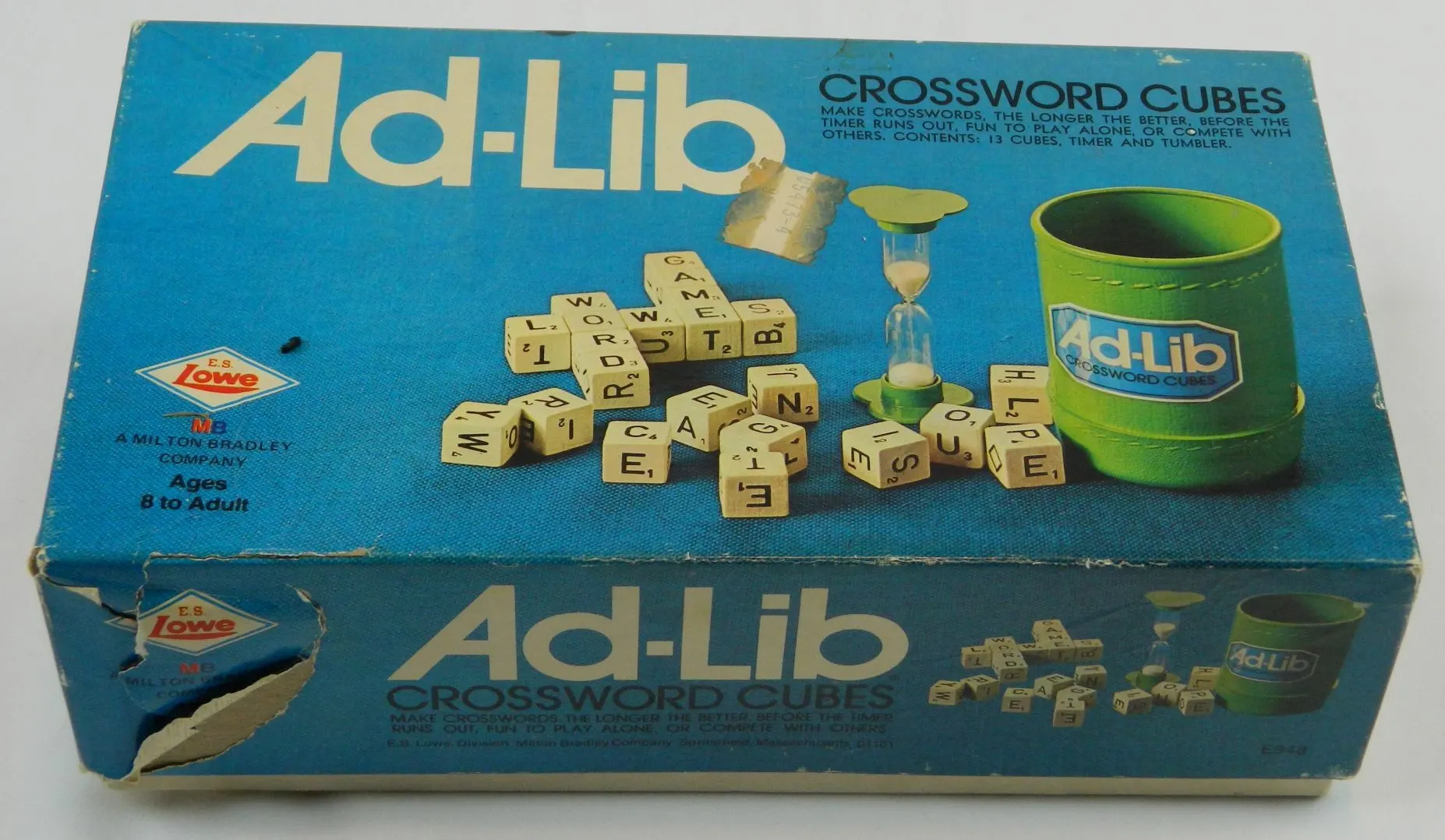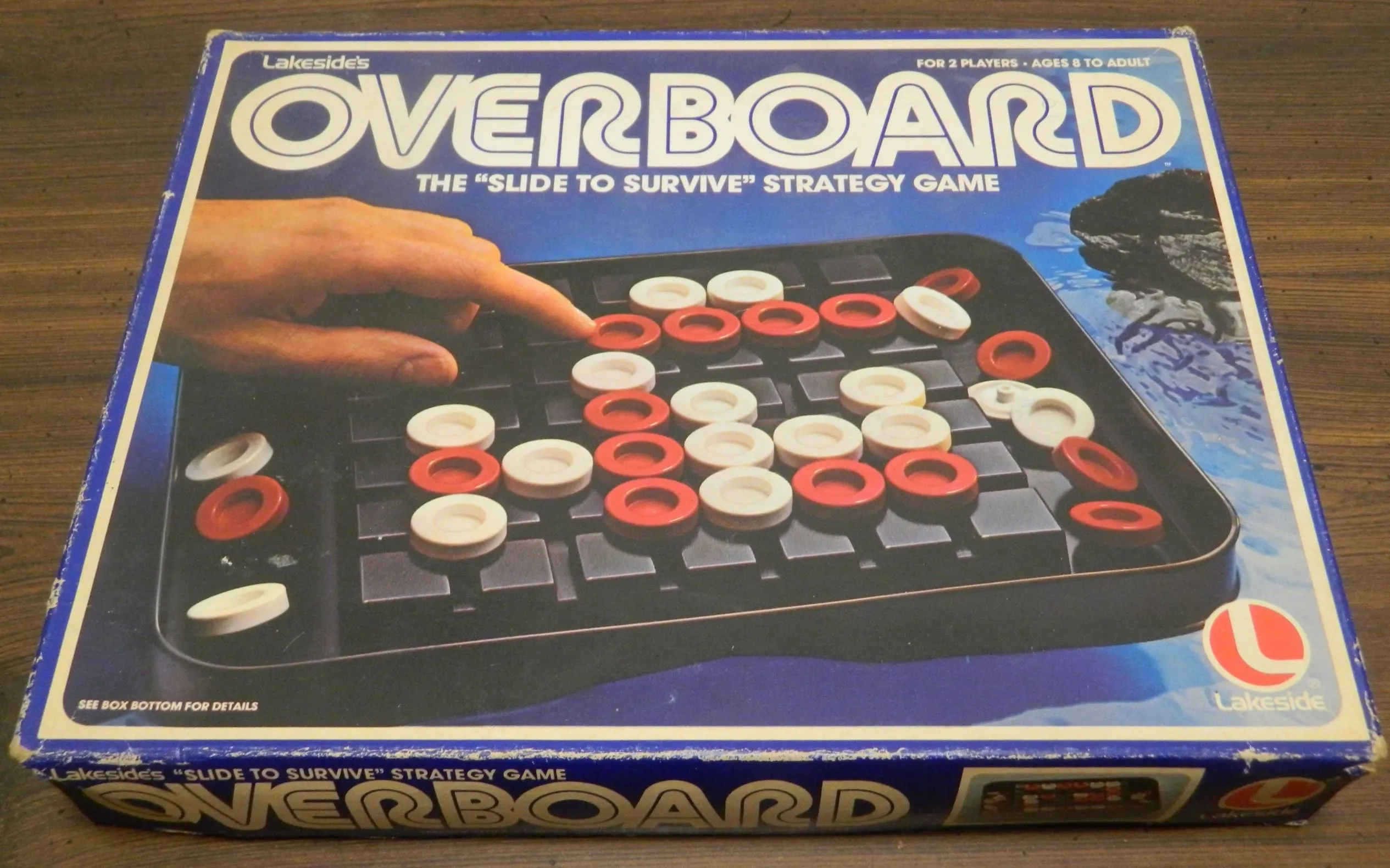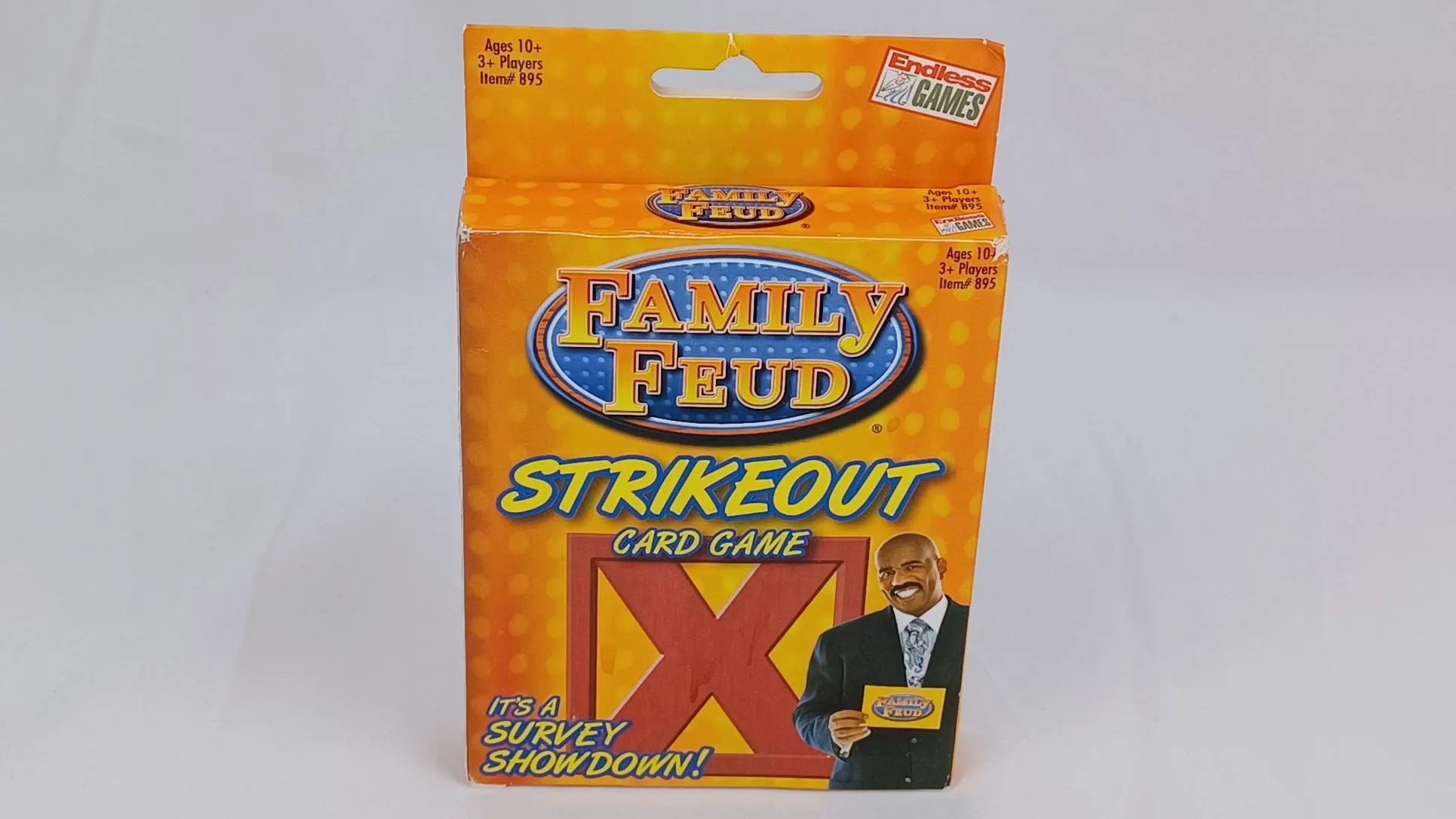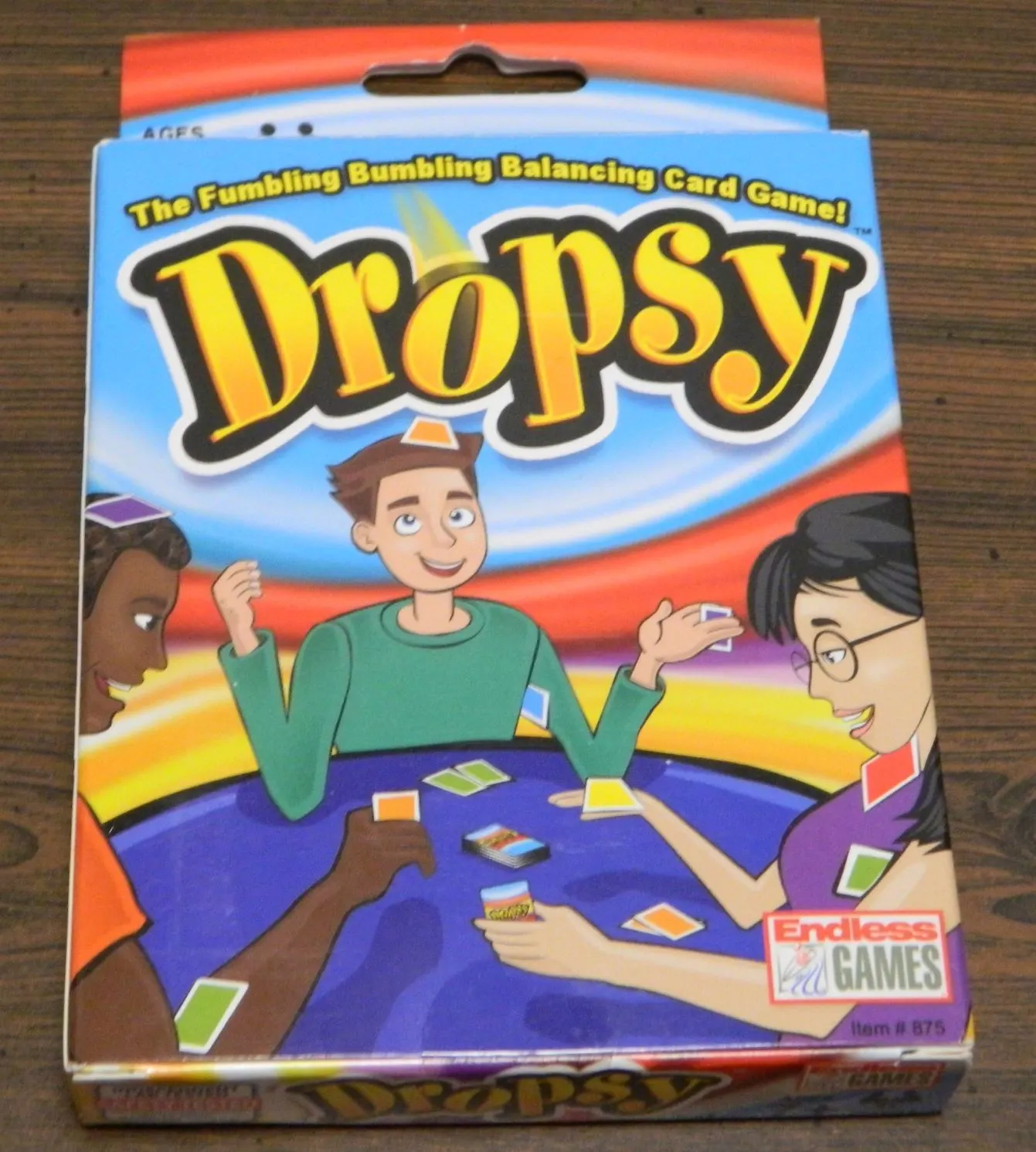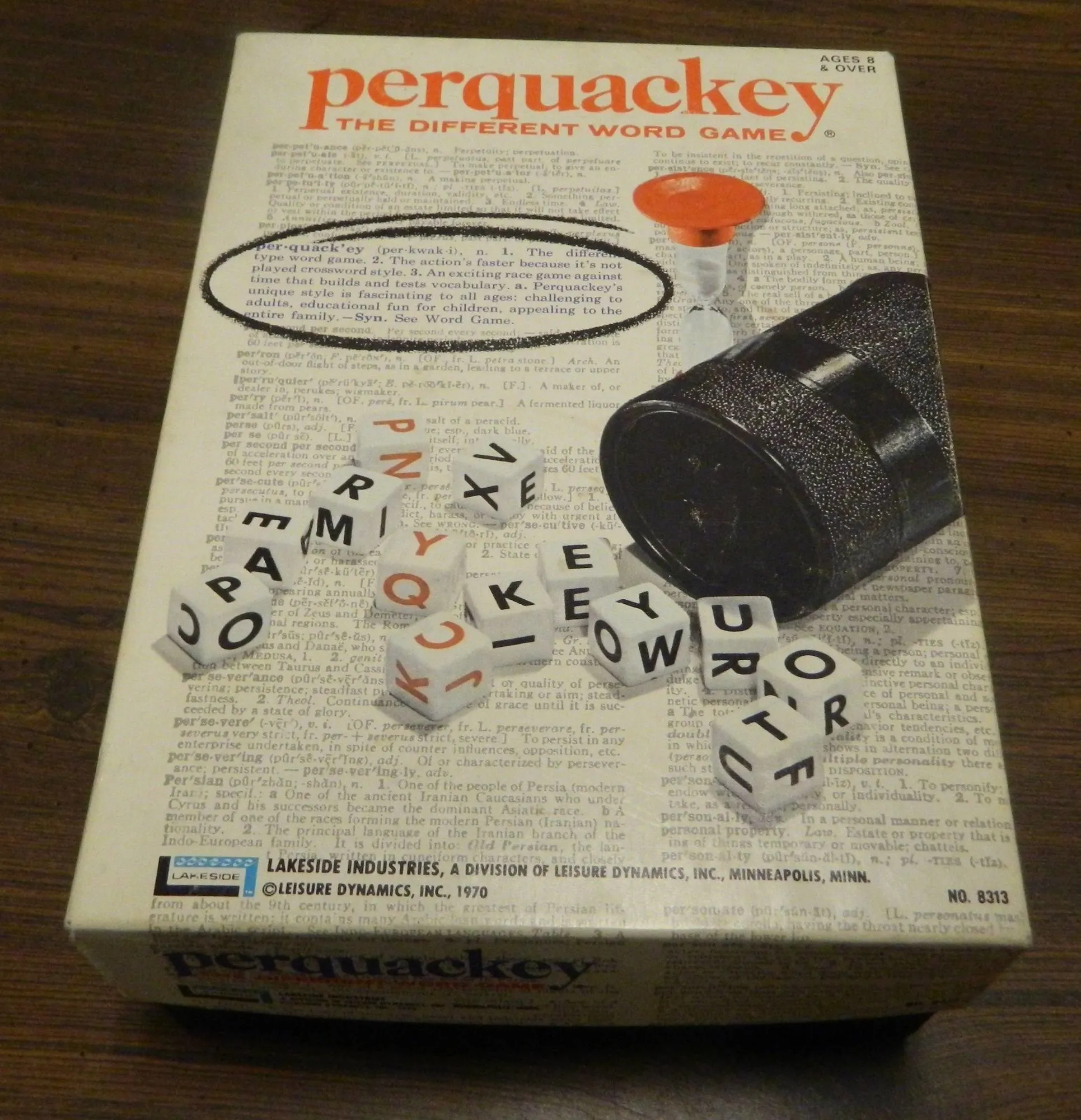While it goes by a bunch of different names, the classic dice game of Yacht/Poker Dice/etc has been around for a long time. There are various versions of the game from around the world with very similar rules outside of a few minor differences. The concept itself has been in public domain for many years which basically means that anyone can make their own version of the game. Probably the most popular version of the game is Yahtzee which was created back in 1956. While not quite as popular, around a decade later in 1963 Kismet was released which is the game that I am taking a look at today. Kismet is a solid dice game that fails to do anything particularly original for the genre.
How to Play Kismet
Playing the Game
Kismet is played with players taking turns rolling the dice.
You will begin your turn by rolling the five dice. With the dice you are trying to roll different combinations in order to score points. After analyzing the dice to decide which combination that you are going to try and roll, you will choose which dice to set aside and which dice to re-roll.

For their first roll this player rolled a four, two threes, a one, and a six. As the player rolled three green numbers they have decided to keep those three dice and re-roll the other two dice.
You will then re-roll the dice that you have chosen. After this second roll you once again choose which dice to keep and which to re-roll. For your third roll you can re-roll dice that you decided to keep after the first roll.

In their second roll this player rolled another four. As they have four green dice and are close to a full house, they will roll the five dice for their final roll.
Once you have rolled the dice three times you will score one of the combinations. Based on the dice you rolled you may have completed one or more of the combinations. You can fill in one of these combinations with the points you scored as long as you didn’t already score that combination. If you didn’t roll any of the combinations that are still available, you will choose one of the combinations that you haven’t filled in yet and score zero points for that combination.

After their third roll this player has rolled two fours and three threes. They have a number of different combinations that they could score with these dice. The best option would likely be to score it for Full House Same Color.
The Kismet scorecard is broken up into two different sections which I will detail below:
Basic Section
The basic section of the scorecard is based around individual numbers.
For each of these dice combinations you will add up the numbers on all of the dice matching the number that you have chosen to score. This is the number that you will score for the category. For example if you rolled three sixes you will score 18 points in the sixes category.
At the end of the game you can score bonus points based on the total points you scored from all six categories in the basic section. If your total score is between 63-70 you will receive 35 bonus points. If your total is 71-77 you will score 55 bonus points. Finally is you scored 78 or more points you will receive 75 bonus points.
Kismet Section
For the Kismet Section you are trying to roll different combinations of numbers. Some of these combinations rely on different colors. The dice in Kismet are colored as follows:
- 1 and 6: black
- 2 and 5: red
- 3 and 4: green
The various categories are as follows. First is a description of what you have to roll. Then there is the number of points that the combination is worth.
Two Pair Same Color: For this combination you need to roll two pair that feature the same color. Four/Five of a Kind can also be scored for this combination. Sum of all rolled dice.
Three of a Kind: For this combination you need to roll three or more dice of the same number. Sum of all rolled dice.
Straight: For a Straight you need to roll five consecutive numbers (1-2-3-4-5 or 2-3-4-5-6). 30 points
Flush: To roll a Flush you need all dice to be the same color. 35 points
Full House: A Full House includes three dice of one number and two dice of another number. Sum of all rolled dice + 15
Full House Same Color: This category is the same as a normal Full House except that all of the dice need to be the same color. Sum of all rolled dice + 20
Four of a Kind: You need to roll four or more of the same number. Sum of all rolled dice + 25
Yarborough: This combination does not require any specific numbers to be rolled. Sum of all rolled dice.
Kismet: To roll a Kismet you need to roll five of the same number. Sum of all rolled dice + 50
If you happen to roll a second Kismet it can act as any other combination in the Kismet Section or for the corresponding number in the Basic Section. If you are playing with other players, each Kismet after the first forces the rest of the players to write a zero in their first open category in the Basic Section. If all of their Basic Section is filled in, they will write a zero in the first open category in the Kismet Section. This basically acts like the rest of the players have lost a turn. The player that rolled the Kismet will then take another turn right away.
End of Game
The game ends when all of the players have scored all of the categories on their scorecard. The player that scored the most points wins the game.
My Thoughts on Kismet
I am not going to sugarcoat it. Kismet is not a particularly original game. That is not all that surprising since the game is based off of Yacht/Poker Dice which has been in the public domain for quite some time. Basically all of these games take a game like Poker and convert it into a dice game. The players take turns rolling the dice trying to roll different dice combinations. Players have the opportunity to re-roll the dice twice in order to improve their score. The player who ultimately scores the most points wins the game.
Those who have played one of these types of games before should already have a good idea of what to expect from Kismet. In particular Kismet is very similar to Yahtzee. The main gameplay is exactly the same. Even most of the scoring categories are the same. There are pretty much only two small differences between the two games. First Kismet does not feature the Small Straight category from Yahtzee. The other differences comes from the fact that Kismet colors each side of the dice. This allows the game to utilize scoring categories based on color similar to suits from games like Poker. The three additional categories that are added due to the colors are Two Pair of the Same Color, Flush, and Full House of the Same Color.
At first the addition of colors to the game don’t seem like much of a deal. In some ways the colors don’t add much to the game as they just add a few more scoring opportunities. On the other hand adding the colors do lead to Kismet being slightly better than Yahtzee. This is because adding the colors actually adds slightly more strategy to the game. Instead of just thinking about numbers you also have to consider colors. As there are more categories in the game, there are more things to consider before choosing which dice to re-roll. You also have more opportunities to create a group of dice that score you points. This makes it feel like you have a little more control over your fate in the game.
I will say that this doesn’t make a drastic impact on the game though. Due to this fact your opinion on Kismet is basically going to come down to your feelings on this genre of dice rolling games in general. Basically if you have never cared for Yahtzee or one of the many other similar games, there is nothing about Kismet that will change your mind. If you really like this genre of dice games though, I think you will enjoy Kismet as it follows the same basic formula. Those who have somehow never played one of these games before will probably enjoy the game if you think the premise sounds interesting.
Like pretty much all of these other dice rolling games, Kismet maintains the same basic balance between simplicity, skill/strategy, and luck. As the gameplay basically comes down to rolling the dice and choosing which dice to keep to get certain combinations, the game is really easy to learn and play. The game can be taught to new players within just a couple minutes. As for strategy and skill it mostly comes down to how well you can roll numbers on command and whether you make the right choices about which dice to keep. Like pretty much all dice games the game relies pretty heavily on dice roll luck. Unless you are really good at rolling specific numbers or you make bad decisions about which dice to keep, luck is going to determine who is going to win the game.
Outside of the game relying on quite a bit of luck, I would say that the biggest issue that I had with Kismet and pretty much all of these other dice games is that they just take too long. Now this is going to heavily depend on the number of players as each additional player will extend the game’s length quite a bit. Each individual turn doesn’t take too long unless a player takes way too long trying to figure out what dice to keep. The problem is that there are many different scoring categories where the game really starts to drag. While I didn’t mind the early game, after a while I just wanted the game to end as you are basically doing the same things over and over again. While the game supports as many players as you want, I personally would recommend limiting the number of players as the fewer players that there are in the game the more likely you are to finish the game before it starts to drag.
Finally before wrapping up I wanted to quickly talk about the game’s components. As there have been quite a few different versions created over the years, the component quality is going to depend on which version of the game you purchase. The game basically just consists of dice, a dice cup and the scorepad sheets. While it is nice to have the colored dice to know which color each number is, you don’t really need an official copy of the game to play Kismet. You basically just need five standard six sided dice and something to write each players’ score on. Without the special colored dice you will have to remember which color each number is, but that shouldn’t be too difficult. Therefore there isn’t a whole lot to say about the game’s components as the dice for some versions are pretty good while others are prone to have the colors fade off.
Should You Buy Kismet?
At the end of the day there isn’t a whole lot to say about Kismet. It is based around the same public domain dice games as many other games, and that becomes clear quickly. You basically get three rolls in order to roll different combinations to score points. Honestly the only somewhat original thing that the game adds to the formula is that all of the numbers are given an associated color which adds categories where you roll numbers of the same color. This adds a few more decisions and a little more strategy to the game which makes Kismet slightly better than Yahtzee. Like the rest of the genre the game is easy to play and learn. It does rely on a lot of luck though as who rolls the best is going to win. The game also tends to take too long unless you only play with two players.
My recommendation is quite simple for Kismet. If you have never really cared for this genre of dice games, I see nothing in Kismet to change your mind. Those that really enjoy games like Yahtzee though should enjoy Kismet as well. As the only thing unique about the game are the colored dice though, I would probably only pick up the game if you can get a good deal on it.
Buy Kismet online: Amazon, eBay. Any purchases made through these links (including other products) help keep Geeky Hobbies running. Thank you for your support.

